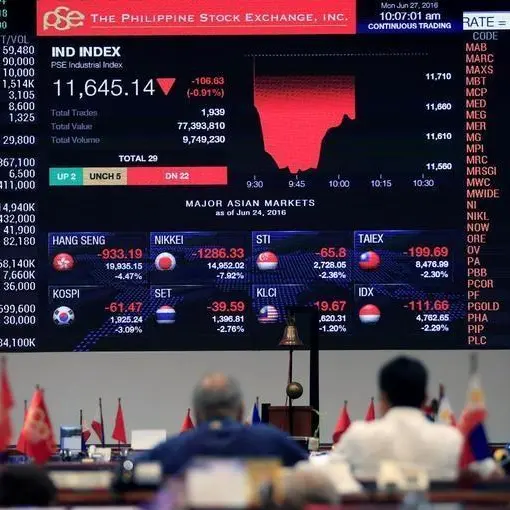PHOTO
The Nasdaq rose on Thursday as electric automaker Tesla topped Wall Street's profit target, while the benchmark S&P 500 edged lower due to losses in telecom stocks after AT&T cut its cash flow forecast.
Tesla rose 5.5% as its quarterly profit benefited from a string of price increases for its cars and helped offset production challenges.
Positive earnings reports from Tesla and streaming giant Netflix Inc have of late boosted megacap growth stocks, which have been under pressure from rising interest rates. Shares of Netflix rose 0.3%.
"Is it possible that Tesla provides a short term rally? Yes, absolutely," said Giuseppe Sette, president of the quantitative research firm Toggle.
"However, it seems likely that if we are truly in an age of liquidity withdrawal and quantitative tightening, rallies on high-momentum stocks like Tesla might not be secular or cyclical, but just rather short-term."
The S&P 500 communication services index fell 1.5% and weighed on the benchmark index as AT&T Inc cut its annual cash flow expectations by about $2 billion.
AT&T shares plunged 10%, and rivals Verizon Communications Inc and T-Mobile US Inc dropped nearly 4% each.
Market participants continue to await anxiously for the Federal Reserve meeting next week where policymakers are expected to raise interest rates by 75 basis points to curb runaway inflation.
The rate decision will be followed by the crucial second-quarter U.S. gross domestic product data, which is likely to be negative again.
By one common rule of thumb, two quarters of negative GDP growth would mean the United States is already in a recession.
"The backdrop for U.S. corporate earnings looks challenging. With slowing economic growth, a strong US dollar and margins looking stretched, we suspect S&P 500 companies will struggle to meet the optimistic expectations embedded in analyst forecasts," said Thomas Mathews, markets economist at Capital Economics.
Analysts expect aggregate year-on-year S&P 500 profit to grow 6.3% for the second quarter, down from the 6.8% estimate at the start of the three-month period, according to Refinitiv data.
Meanwhile, tighter monetary policy and financial conditions appears to have led to a cooling in labor market as data showed the number of Americans filing new claims for unemployment benefits rose to the highest in eight months.
At 9:49 a.m. ET the Dow Jones Industrial Average was down 155.17 points, or 0.49%, at 31,719.67, the S&P 500 was down 6.23 points, or 0.16%, at 3,953.67 and the Nasdaq Composite was up 16.50 points, or 0.14%, at 11,914.15.
Falling oil prices hit the S&P 500 energy sector, which fell 3.7%.
United Airlines Holdings fell 8.2% after posting a lower-than-expected quarterly profit, while American Airlines dropped 6.2% after flagging cost pressures.
Declining issues outnumbered advancers for a 1.87-to-1 ratio on the NYSE and for a 1.21-to-1 ratio on the Nasdaq.
The S&P index recorded one new 52-week high and 29 new lows, while the Nasdaq recorded five new high and 16 new lows.
(Reporting by Shreyashi Sanyal and Aniruddha Ghosh in Bengaluru; Additional reporting by Medha Singh Editing by Arun Koyyur)












